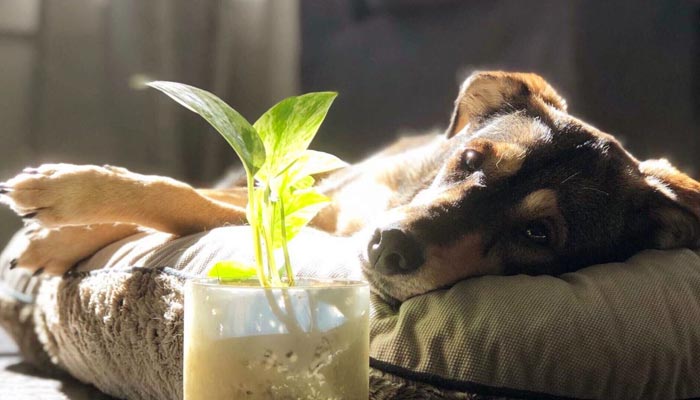10 Poisonous House Plants Dangerous for Children and Pets
Last updated on June 30th, 2023 at 05:37 am
Do you love decorating your home with natural and full of life plants? The foremost and incredible benefit of welcoming plants in your homes is their air purifying properties. Even there are Vastu plants for home that can bring positive and happy vibes to you and your family.
But do you also know some houseplants can even lead to health issues in humans and pets when ingested? When you have kids and pets around in your home, there are some indoor plants that should be handled with great care and must be kept out of their reach at all costs to avoid any mishaps. Know them here…
Table of Contents
10 Toxic Indoor Plants for Pets and Children
- Philodendron
- Peace Lily
- English Ivy
- Snake plant
- Pothos
- Lily
- Arrowhead plant
- Jade plant
- Daffodil
- Dieffenbachia
Poisonous Plants & Their Effects
Know here the dangerous houseplants and their effects on human and animal health:
1. Philodendron
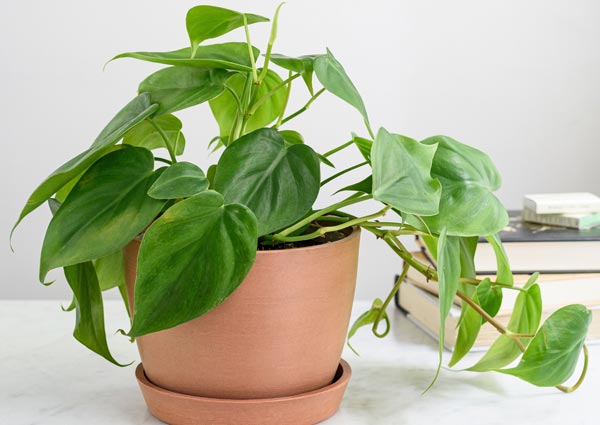
Philodendron as a houseplant has captured everyone’s attention for quite a long time now owing to its rich variety of leaves and color patterns. These climbers beautifully accentuate your home interiors with their vibrant natural colors. But they should also be kept in a place away from your kids and pets like on a shelf or a window sill as they are poisonous and can lead to harmful health effects.
What makes this indoor plant poisonous? : The presence of calcium oxalate crystals in this plant makes it mildly poisonous. Pets and children can suffer poisoning after ingesting any part of this houseplant.
Effect on children : Stinging of mouth and throat, dermatitis, swelling in the mouth, and swollen digestive tract.
Effect on pets: Cats and dogs suffer from pain, seizures, spasms, and swelling after ingestion of philodendron plants.
2. Peace lily

Peace lilies are one of the most favorite plants for people who love to decorate their homes with natural indoor plants. The beauty and aesthetic appeal of this house beauty makes it the most revered houseplants. However it is also advised to keep this plant out of reach of children and pets on high platforms as they have toxic components in them.
What makes this indoor plant poisonous? : Peace lily contains calcium oxalate crystals and can be poisonous if ingested by humans and pets. Even the liquid from the leaves and plants can lead to harmful symptoms.
Effect on children : Swelling and burning sensation on the lips, tongue and mouth; nausea; vomiting; difficulty in swallowing, or speaking, and diarrhea.
Effect on pets : Cats and dogs can suffer from diarrhea, burning mouth, dehydration, vomiting, lack of appetite, and excessive salivation.
3. English ivy

One of the most popular and beautiful creepers on walls and stones, English Ivy creates cascading indoor and outdoor decorative pieces. English Ivy is a houseplant as it is mostly found climbing on the walls of the homes and also cleanses air from toxins. However, it is not beneficial when it comes to its ingestion.
What makes it poisonous : The berries and leaves of the English Ivy plant are poisonous as they contain toxic components such as didehydro falcarinol, falcarinol, and hedera saponins.
Effect on humans : Handling of ivy can create an itching sensation or blisters on the skin. Ingestion in large quantities can lead to burning sensation in the mouth and throat. Sometimes the toxicity of this plant can lead to fever and convulsions.
Effect on pets : Cats and dogs can suffer from tremors, diarrhea, vomiting, weakness, gasping breaths, and staggering.
4. Snake plant
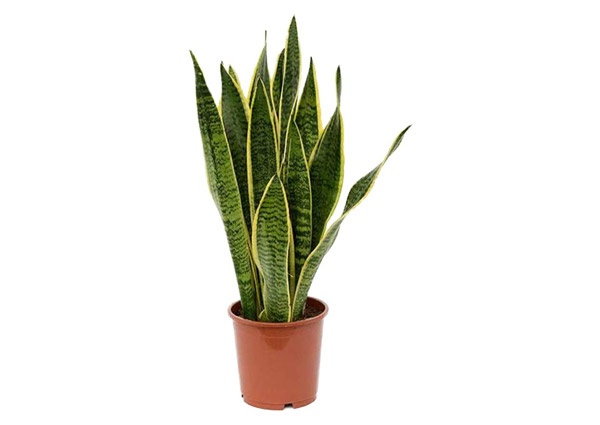
Another amazing indoor plant, a snake plant or mother-in-law’s tongue is a renowned air-purifying plant and a good luck part. The unique appearance of the leaves and its low-maintenance characteristic makes it a most-picked houseplant by the people.
What makes it toxic : The presence of saponins in the snake plant can lead to gastrointestinal discomfort in humans when ingested. Moreover, it is definitely not a good luck plant for your cats and dogs.
Effect on humans : The symptoms of ingesting the parts of this plant are milder and short-lived in humans. They can be nausea, salivation, mouth pain, and sometimes skin allergy.
Effect on pets : The symptoms can range from excessive salivation, vomiting, nausea, and diarrhea.
5. Pothos
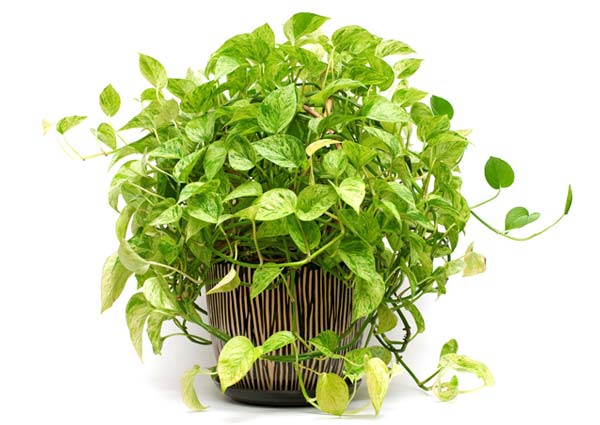
Also known by the names Pothos Ivy and Devil’s Ivy, this houseplant has variegated leaves and is blessed with air purifying qualities. Found in 60% of the homes across the country, pothos is available in a wide range of colors and patterns with heart-shaped leaves.
Why it is toxic : Pothos is mildly harmful when ingested in small quantities and sometimes lead to serious reactions in humans and animals due to the presence of calcium oxalate crystals.
Effect on humans : Skin irritation; swelling on the tongue, lips and throat; burning sensation in the mouth, diarrhea, and vomiting.
Effect on pets : Swelling of the mouth, drooling, difficulty breathing, choking, and loose stomach.
6. Lily

Available in multiple varieties, lily as a houseplant accentuates the beauty of your home but can also be dangerous to human health and pets. The high levels of toxicity of this indoor plant makes you keep it out of reach of children and pets. Some of the toxic varieties of lilies are tiger lily, calla lily, day lily, asian lily, easter lily, and rubrum lily.
What makes lily poisonous : The presence of calcium oxalate crystals makes this houseplant poisonous for humans and pets.
Effect on humans : Vomiting, headache, blurred vision, stomach upset, and skin allergy.
Effect on pets : Cats are much more susceptible to poisoning than dogs. They can suffer from loss of appetite, vomiting, and lethargy.
7. Arrowhead plant
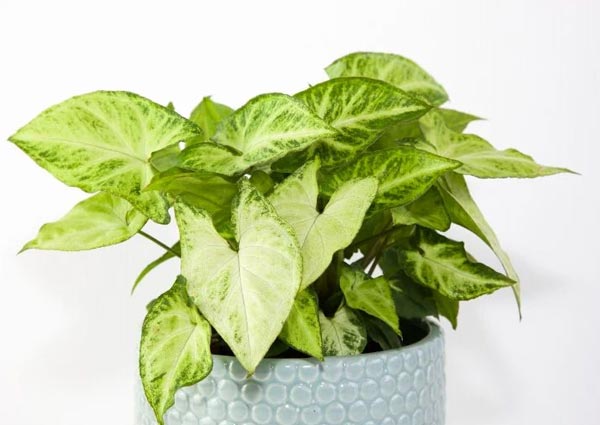
Also popularly called as syngonium or goosefoot plant, arrowhead plant is a distant relative of philodendron requiring less maintenance. This houseplant is famous as both indoor and outdoor plants in homes and gardens. As this plant shed many leaves for regrowth, you should take extreme care when kids and pets are around. Immediately remove the leaves as their ingestion can lead to mild to severe health problems.
What makes it dangerous : Arrowhead plants contain calcium oxalate crystals that make this plant poisonous.
Effect on humans and pets : Stomach upset, vomiting, and irritated skin.
8. Jade plant
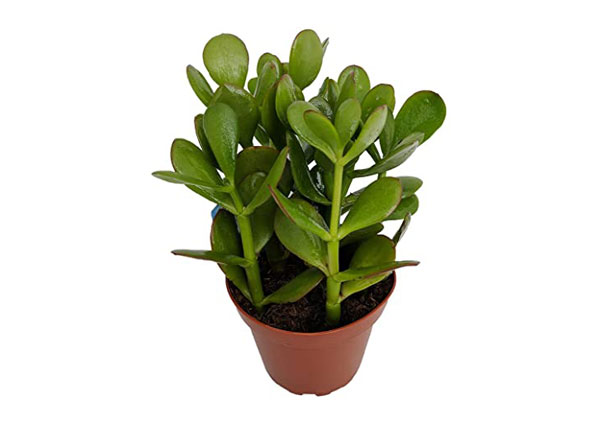
Jade plant is one of the popular indoor plants belonging to the succulent plants category. This small houseplant is a flowering plant that bears flowers in the shades of pink, white, purple, and orange adding more to the beauty of this plant. It is believed that the jade plant is mildly toxic for humans and pets.
Why jade plant is poisonous : All the parts of the jade plant are poisonous such as flowers, leaves, stems and roots. The sap or juice of this houseplant is dangerous for skin.
Effects on humans : this houseplant can cause diarrhea, skin irritation, vomiting when ingested.
Effects on pets : Jade plants can cause lack of coordination and depression in cats and dogs.
9. Daffodil

The beautiful yellow-colored flowers bearing houseplant look fantastic when decorated in a home. But do you know these houseplants can be dangerous to human and animal health?
Why daffodils are dangerous : The bulbs of daffodils contain calcium oxalate crystals and lycorine and both these components are toxic in nature.
Effects on humans : The ingestion of daffodils, especially the bulbs, can cause nausea, mouth irritation, diarrhea, vomiting, and stomach upset, and sometimes even a skin condition.
Effects on pets: Abdominal pain, drooling, convulsions, increased heart rate, drowsiness, etc. are some of the side effects of poisoning by daffodils.
10. Dieffenbachia (Dumb Cane)
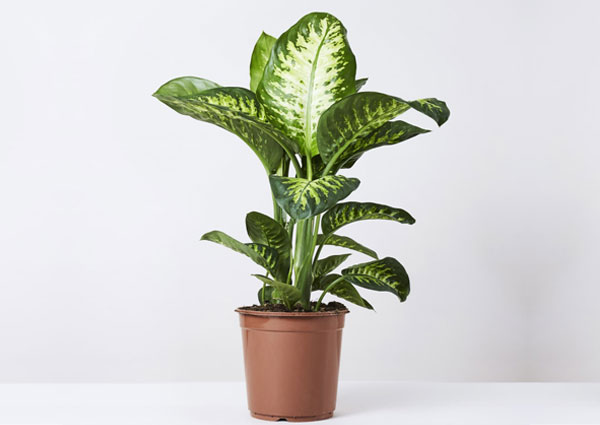
A relative to the philodendron houseplant, dieffenbachia is an attractive, lush green indoor plant with thick stems and fleshy leaves with shades of yellow on the leafage. Perhaps a pretty looking plant in any home, dieffenbachia has poisonous properties affecting human and animal health.
What makes dieffenbachia poisonous : The presence of calcium oxalate crystals in the dieffenbachia plant makes it toxic for anyone in your home.
Effect on humans and pets : Salivation, pain in the mouth, vomiting, nausea, diarrhea, swelling of the throat, and burning sensation.
Effects of plant poisons on health
Any indoor plant that is termed as ‘poisonous’ or ‘toxic’ should be treated with care. The factors that influence the effects of plant toxins on health:
- The nature of the poison.
- Quantity of the poison in the plant.
- The plant part ingested.
- How much toxic part of the plant is ingested?
- The overall health of the humans or animals at the time of ingestion.
- The BMI of a person eaten by a person.
- The time for which a person is exposed to the toxin.
- The sensitivity of a person towards a toxin.
Effective Ways to Reduce Plant Toxins Exposure
- Clean the debris of the poisonous plants regularly.
- Always keep toxic plants out of reach from children and pets.
- Always throw the waste parts of such houseplants at a distant place.
- Teach your kids not to touch dangerous plants.
- Always wears gloves while handling such plants.
- Immediately wash your hands after handling such plants with bare hands.
- Make sure you label all the plants well in your home.
- Trim poisonous indoor plants to save children and pets from poisoning.
- Hang such plants high on porches or plant them in pots.

